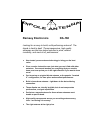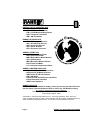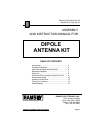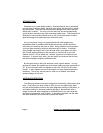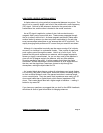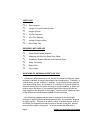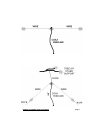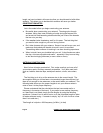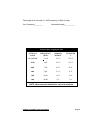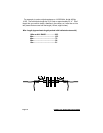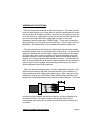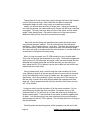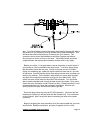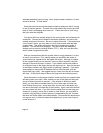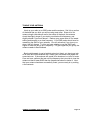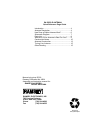
Page 14
RAMSEY DA SERIES DIPOLE ANTENNA
stranded lead about one inch long. Next, strip the center conductor 1/4 inch
closer to the end. Tin both leads.
Wrap the coax wire around the center insulator making sure that it is snug
in one of the two grooves. The end of the coax should loop around and fold
back on itself, overlapping about one inch. Fasten the coax to itself using
the nylon wire ties supplied.
You should still have a short length of wire coming from each antenna wire
connection. Connect one of these to the center conductor, and one to the
outside conductor of the coax. Be sure to solder them well. If the wires have
a lot of slack in them, you may want to cut off some excess wire and then
connect them. The solder connections should not support any weight, if
possible. This will help their longevity. You should now add waterproof
sealant such as silicone caulking (Silastic, RTV). After you have done this,
seal it further using electrical tape.
After you have ensured that the coaxial cable is snugly attached, it is time
to mount your antenna. First, identify where you would like the center of
your antenna (as a general rule, the higher the better). Although it is better
to find a place where you can secure it, you may also suspend it using the
strength of the ends to hold it in the air. If you need to secure the antenna,
tie a length of rope to the object that you are securing it to. Next, tie the rope
to the center insulator very tightly (short of breaking it, please!). If you have
some patience, the rope will fit between the fins of the insulator, and will
secure itself very nicely. We suggest that you use a knot that will not loosen
with time. (A Boy Scout may be handy for tying knots and climbing trees.)
Once the center is at the proper location, make sure that your coaxial cable
will easily reach your radio. Next, stretch out one of the wires and bring the
end up to where you wish to secure it. If the location is difficult to reach
easily, you may wish to consider securing it to a lower spot until after you
have finished tuning it up. Using more rope, tie one end to the object, and
one end to the hole in the free end of the insulator. Again, use knots that will
not come loose with time. If you think that the object that you are tying your
antenna to is going to move due to winds or other factors, you may wish to
consider using a pulley or similar system of compensating for this. Connect
the other end of the dipole in the same fashion. Be sure that the dipole does
not sag too much, but also be aware that tightening it up too much may put
undue strain on it.



